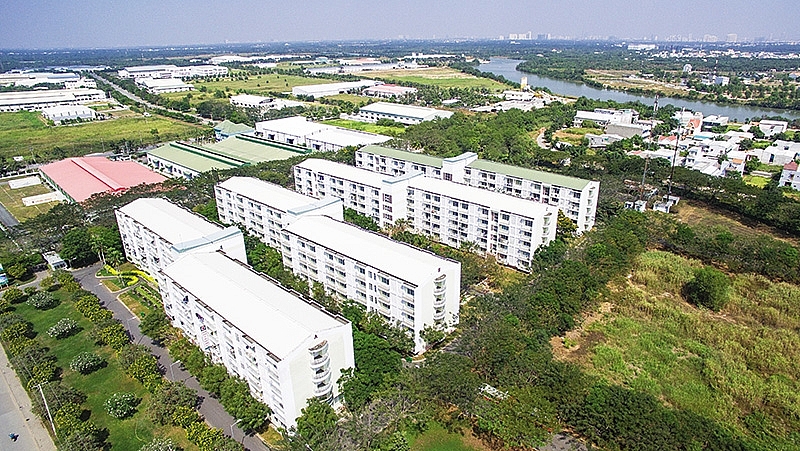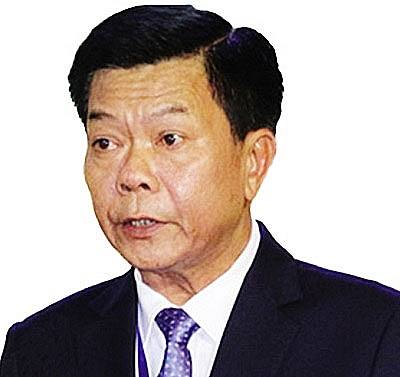Long An reaches out to foreign investors for enhanced growth
 |
| Long An province will try to attract more global brands and investors with high-technology capabilities, Photo: An Thuan |
How has the province fared in foreign direct investment attraction until now?
 |
| Tran Van Can |
Long An granted an investment certificate for the first foreign-invested project in September 1992. Now the province is home to 941 ongoing projects worth $5.95 billion in the total committed capital, 576 of which have been put into operation with the total value of $3.61 billion. A total of 38 countries and territories have been investing in the province. Taiwan comes in the first place both in the number of projects and investment value, followed by South Korea, Japan, and Singapore.
The sectors drawing in the largest foreign direct investment (FDI) flows are textile and apparel, footwear, food processing, and beverage. Foreign-invested projects are mainly positioned in dynamic areas for economic development adjoining Ho Chi Minh City such as Duc Hoa, Ben Luc, Can Duoc, Can Giuoc, and Tan An city.
What role did foreign-invested projects play in driving local socioeconomic development?
Foreign-invested enterprises (FIEs) have played a significant role in propelling provincial development. With their contributions, the structure of the local economy has been transforming in a positive direction with the increased proportion of industry-construction and services, paired with speedy infrastructural development, higher budget contribution, export value growth, job creation, technology transfer, as well as stimulating the domestic production and service sector development.
During 1996-2010, the industrial production value of FIEs (based on 1994 fixed price rate), grew by an average of 27.6 per cent per year. In 2010 alone, the figure accounted for 72.1 per cent of the province’s total. FIEs saw 27.6 per cent growth on average in their export value during 1996-2016.
In 2016, FIEs counted $2.6 billion in the total export value, making up 60.7 per cent of the province’s total and a 45.9-per-cent jump compared to 1996. The number of FIEs engaging in export activities rose from a mere 18 in 1996 to about 300 in 2016.
As for job creation, FIEs based in Long An have been employing 126,280 local labourers, accounting for 47.8 per cent of the province’s total.
Long An has often taken the lead in FDI attraction in the Mekong Delta and the whole country. What factors have contributed to turning Long An into one of the most alluring investment targets in the country?
Long An charms investors by a raft of factors. First and foremost is its favourable geographical position which is contiguous to the southern growth hub Ho Chi Minh City, and is the gateway connecting the southeast region with Mekong Delta cities and provinces.
This has enabled investors in Long An to easily access utilities in technical and economic infrastructure and the market of Ho Chi Minh City, as well as easily approach the Mekong Delta’s abundant material sources for food and agricultural processing. In addition, seamless infrastructure and fruitful workforce are also important factors making Long An a place to invest.
The province is focusing investment into developing major transport infrastructure works in the province, particularly roads leading to districts within the pivotal economic development area, internal, inter-provincial, and inter-regional roads, and the road network linking to Ho Chi Minh City.
As for road transport, Long An is home to many national highways, such as national highways 2N and 1, Ho Chi Minh City-Trung Luong Expressway or Ben Luc-Long Thanh Expressway.
With respect to waterway transport, Long An international seaport on Soai Rap estuary is accessible to 30,000 deadweight tonnage (DWT) ships and in the near future will be able to accommodate 50-70,000DWT ships, a prominent advantage compared to other localities in the region.
Most importantly, investors landing projects in Long An have received active support from the provincial leaders and diverse authorised agencies. This was evidenced through Long An’s constant improvements in the provincial competitiveness index (PCI) ranking. Last year, Long An ranked fourth out of 63 localities nationwide in the PCI ranking, up 11 notches compared to 2016, whereas its public administration performance index (PAPI) ranked 11th nationwide and was placed among the highest scorers.
Vietnam has been attracting a growing FDI volume, but experts are warning that the quality is not high enough. What is the situation in Long An?
Like other localities, FDI attraction in Long An also has some limitations. Most foreign-invested projects are modest in scale, with low added values. The projects are mainly in labour-intensive fields, such as textile and apparel, and footwear. In addition, there are not many projects operating in supporting industries, high-tech industries, and we only have a few projects from well-known global brands.
How will the province tackle these limitations?
Long An will continue taking concrete and practical measures to address these shortcomings and bolster the efficiency of FDI attraction in the upcoming time, turning FDI into an important component to the province’s socioeconomic development.
The province will focus on projects of big investment value, having the potential to generate high added values and effectively using natural resources and workforce. FDI attraction will be closely linked to environmental protection to reach sustainable development targets.
Bettering the management of foreign-invested projects and ensuring the effective use of FDI flows is also a priority.
What are the priority investment sectors in Long An at the moment?
In order to effectively exploit the province’s potential, Long An is focusing investment into the fields that the province has bountiful advantages in to attract investment, such as supporting industries (mechanical manufacturing, electrical and electronic, component production and assembly), agricultural processing and high-tech agriculture, satellite urban area development, and port logistics services.
With 28 industrial zones and 32 industrial clusters positioned in areas adjoining Ho Chi Minh City and covering about 15,000 hectares of land planned for industrial production, Long An is ready to provide space, meeting investors’ abundant production and business requirements.
We are committed to doing their utmost to turn the province into an investment hotspot in the country.
What the stars mean:
★ Poor ★ ★ Promising ★★★ Good ★★★★ Very good ★★★★★ Exceptional
 Tag:
Tag:
Related Contents
Latest News
More News
- Ho Chi Minh City hits $8.37 billion in FDI (December 29, 2025 | 08:28)
- Tax sector wraps up 2025 and sets priorities for next year (December 25, 2025 | 14:00)
- Heavy industries set for pilot greenhouse gas quotas (December 25, 2025 | 10:00)
- $250 million deal targets women-owned SMEs, sustainable agriculture (December 22, 2025 | 17:40)
- UOB sees Vietnam growth easing in fourth quarter (December 22, 2025 | 17:39)
- Government moves to establish International Financial Centre (December 21, 2025 | 21:00)
- Vietnam's IFC to target global investment flows (December 21, 2025 | 18:00)
- Ha Tinh breaks ground on major Vingroup industrial and energy projects (December 19, 2025 | 18:24)
- EVN launches major power infrastructure projects nationwide (December 19, 2025 | 18:17)
- VAL inaugurates second production line to meet domestic animal feed demand (December 19, 2025 | 16:37)























 Mobile Version
Mobile Version